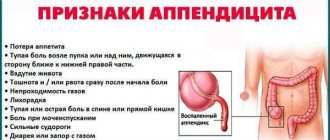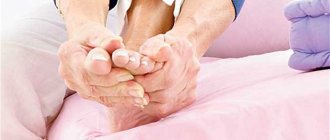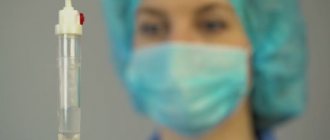Treatment methods for adnexitis
Therapy for adnexitis includes a complex of various measures - taking medications, using physiotherapeutic procedures, and sanatorium-resort treatment. Prevention of complications of this disease plays a significant role.
The main place in this list is occupied by drug treatment with drugs from various pharmaceutical groups (antibiotics, antifungals and antivirals). Modern pharmaceuticals have in their arsenal various dosage forms for the treatment of adnexitis - tablets, solutions for injections and for the preparation of medicinal baths, rectal and vaginal suppositories, sprays for irrigation of the external genitalia.
During treatment, you should not limit yourself to only drugs administered orally or exclusively topical agents. The best results can be achieved with the combined use of medications.
All treatment regimens necessarily include the introduction of suppositories, as a necessary component for successful treatment of adnexitis.
Main groups of antibiotics
Not all drugs that have a bacteriostatic or bactericidal effect are indicated when oophoritis is detected.
Also, their specific type is prescribed taking into account the causative agent of the infection, the severity of the pathology and the characteristics of the female body.
Groups of antimicrobial substances:
- Tetracyclines (Doxycycline) have a wide spectrum of action, so they can be used at the very beginning, since they affect many pathological microorganisms. Do not forget that they do not treat infections caused by protozoa, fungi or bacteria with high acid resistance;
- Penicillins (Amoxiclav) are often used in the treatment of oophoritis, primarily in women with other diseases, because this group has a minimal number of contraindications. They have pronounced bactericidal abilities;
- Macrolides (Azithromycin) – stop the functioning of microbes such as streptococci, staphylococci, chlamydia and mycoplasma;
- Nitromidazoles (Metronidazole) - act on a variety of anaerobic microorganisms, regardless of whether they are gram-positive or gram-negative;
- Fluoroquinolones (Ofloxacin) are often used in gynecological practice because they affect many bacteria without causing addiction in patients.
https://youtu.be/QCpfQpZXC8E
Pros and cons of candle therapy
| pros | Minuses | |
| 1 | No special qualifications required for use (such as injections) | A prerequisite for treatment with candles is complete abstinence from sexual intercourse. |
| 2 | When inserted, the suppositories end up directly at the site of inflammation. | It is impossible to manage only with topical agents; an addition to therapy in the form of tablets or injection solution is required |
| 3 | Candles quickly relieve pain and stop inflammation | May cause itching, burning, allergic reaction |
| 4 | Do not irritate the gastrointestinal mucosa, as tablets do | Requires the use of sanitary pads, since discharge after the introduction of suppositories can stain underwear and bed linen |
| 5 | They do not have side hepatogenic effects, unlike antibiotic tablets | — |
| 6 | The wide range of suppositories of various pharmaceutical effects offered by the pharmacy chain and affordable prices will satisfy all categories of consumers | — |
| 7 | Certain names of suppositories can be used during pregnancy and lactation | — |
After comparing the positive and negative aspects of using suppositories, we can conclude that their disadvantages are insignificant and appear for a short time.
Gentamicin for adnexitis
Treatment of adnexitis with Gentamicin always begins with intravenous or intramuscular administration of the antibiotic. When acute symptoms of the disease are eliminated, injections are replaced with tablets.
Gentamicin is a broad-spectrum antibiotic designed to combat foreign pathogenic organisms. The drug belongs to the Aminoglycoside group and is sold in pharmacies in the form of injection solutions. Main features of the drug:
- Gentamicin is prescribed to women with adnexitis during inpatient therapy. The duration of treatment is standard (7-10 days). Dosage - 15 injections for the entire course. Gentamicin solution should be administered intravenously, 2 times a day.
- The antibiotic should not be used by women with kidney failure, since it is eliminated through urine.
- The drug is highly effective in the fight against aerobic gram-negative microorganisms. At the same time, the effectiveness of Gentamicin in terms of destroying gram-positive bacteria is minimal. That is why gynecologists recommend combining the medicine with other antibiotics.
Therapy of adnexitis with Gentamicin is performed in combination with other treatment methods. An alternative drug is Ofloxacin.
Rules for using candles
The treatment regimen for adnexitis may include not only vaginal, but also rectal suppositories, which must be inserted into the rectum. Rectal suppositories are most often prescribed to relieve inflammation.
The sequence and rules for using suppositories in the treatment of inflammation of the appendages:
- The suppositories are administered with clean hands. Before this, hygiene procedures should be carried out and the intestines should be emptied if we are talking about rectal suppositories.
- Vaginal suppositories are administered while lying on your back, rectal suppositories are administered while lying on your side. After administration, you need to be in a horizontal position for 30-40 minutes to evenly distribute the components of the drug throughout the vagina or rectal mucosa.
- Most often, this procedure is carried out in the evening before bed.
- Refusal of sexual contacts and use of daily sanitary pads is mandatory.
Causes
The mechanism of development of adnexitis is based on the entry of streptococci, staphylococci, E. coli or gonococci into the organs of the reproductive system. This is preceded by intimacy with a partner who suffers from sexually transmitted infections and does not perform hygiene procedures. Also, pathogens of the listed species penetrate the woman’s urogenital tract during diagnostic and treatment procedures.
For example, if the doctor performed a vaginal smear, inserted a catheter or other manipulations wearing contaminated gloves and did not use disinfectant solutions. In the development of adnexitis, the state of immunity is of no small importance. If it is weakened, the woman is susceptible to salpingoophoritis. Factors that reduce the body's resistance: hypothermia, exposure to stress, lack of sleep, fasting and chronic diseases. Experts identify 10 main reasons that determine the development of adnexitis.
Aggravated abortion
After curettage of the uterus, inflammation is associated with incomplete cleansing of it from fragments of the placenta and fertilized egg; caused by poor personal hygiene and infrequent replacement of pads. Signs of the condition: a sharp increase in body temperature, pain in the lower abdomen, aching in the sacrum, decreased blood pressure, uterine bleeding, bloating of the abdominal cavity, weakness.
The condition can even lead to loss of consciousness. Emergency hospitalization to the gynecology department, repeated curettage, and antibiotic therapy are indicated. If inflammation after an abortion takes a chronic course, its signs are slightly expressed, the pathological process covers the ovaries and fallopian tubes.
Sexually transmitted diseases
Chlamydia, gonorrhea and other sexually transmitted diseases are characterized by the production of mucopurulent secretion in copious amounts. It is distributed in the urogenital tract, enters the sterile surface of the fallopian tubes and ovaries, causes their inflammation, and glues the lumen of the hollow organs. If adnexitis is caused by sexually transmitted diseases, treatment begins with eliminating the underlying infection.
To visit a specialist in a timely manner, you need to know the main signs of chlamydia, gonorrhea, and trichomoniasis:
- Itching in the genitals
- Purulent or foamy discharge with a fishy or putrid odor
- Periodic increase in body temperature
- Pain during intercourse
- Failure of the menstrual cycle
Against the background of sexually transmitted infections, the patient develops problems with urination (due to the development of cystitis), decreased libido, weakness and a general deterioration in well-being. Timely elimination of a sexually transmitted disease reduces the risk of adnexitis, but at the same time the woman’s regular sexual partner must undergo treatment.
Thrush
Vaginal candidiasis develops due to failure to perform hygiene procedures, unprotected intimacy with a partner whose genitals are affected by the fungus; taking antibiotics. Also, the appearance of thrush is promoted by intestinal dysbiosis, rare replacement of pads or tampons, alcohol abuse, and diabetes. Vaginal candidiasis is manifested by pain during intimacy, cheesy discharge, and itching that occurs in the genital tract. From the vagina, the inflammatory process spreads to the appendages. Simultaneously with adnexitis, the patient needs to get rid of candidiasis and restore the vaginal microflora.
Colitis
This is an acute or chronic inflammation of the colon. Develops due to the activity of pathogenic microflora. The disease progresses asymptomatically for a long time. Then the woman experiences abdominal pain, nausea, bloating, and a bitter taste in the mouth. In the absence of timely treatment, inflammation spreads from the intestines to the appendages, which is explained by the anatomical proximity of the organs. The development of colitis is preceded by intoxication of the body, previous intestinal infection, abuse of dry, spicy, sour foods, and heredity factors.
Frequent use of tampons
If during menstruation a woman does not alternate the use of tampons and pads, and uses only the first option, she will soon develop inflammation. The accumulation of blood in the vagina serves as a favorable environment for the growth and reproduction of pathogenic microflora. The tampon and the secretion that impregnates it are in contact with the appendages. At the initial stage of the inflammatory process, no pronounced signs occur. Adnexitis is often detected during an examination for infertility.
Intimacy during menstruation
During menstruation, the uterus is maximally open, which means it is vulnerable to the penetration of a pathogenic environment. Unprotected intimacy during menstruation increases the likelihood of introducing pathogenic microflora into the female reproductive organ. This contributes to the inflammatory process, which covers not only the internal uterine cavity, but also the appendages.
From the moment of intimacy until the appearance of primary symptoms, it can take from several days to 2-3 weeks. Signs of endometritis: increased body temperature, pain in the suprapubic region, the release of blood clots during menstruation, cycle failure, the appearance of purulent secretion from the vagina. The development of adnexitis can be prevented by avoiding unprotected intimacy during menstrual periods.
Installation of an intrauterine device
After installing an intrauterine device, you need to refrain from lifting weights, abnormal sports training, and excesses in your intimate life. The IUD has a limited service life, after which the contraceptive must be replaced or removed, choosing an alternative type of protection against unwanted pregnancy. If a woman does not consult a gynecologist for a long period of time, an inflammatory process develops.
It covers both the uterus and appendages, which quickly causes deterioration in health. To avoid the development of adnexitis, you need to regularly visit a gynecologist, periodically monitor the location of the IUD, and not use a contraceptive for longer than the prescribed period. If the spiral is displaced or falls out, it must be eliminated.
Failure to comply with hygiene procedures
If a woman does not maintain intimate hygiene, natural secretions accumulate in the genital tract and serve as a favorable environment for the development of the inflammatory process. First of all, cervicitis and vaginitis occur. Then, in the absence of timely treatment, the inflammation spreads to the appendages. Primary signs that occur during the development of vaginitis and cervicitis: pain during intimacy, cheesy or purulent vaginal discharge, irritation during urination. Timely implementation of hygiene procedures prevents aggravation of the condition in the form of adnexitis.
Inflammation of the uterus, vagina
Endometritis and vaginitis are the consequences of poor personal hygiene, intimacy with a partner who does not perform self-care procedures, and the outcome of frequent abortions. Signs of both inflammatory conditions:
- Increase in body temperature to subfebrile levels
- Pain in the suprapubic region and lower abdomen, which indicates the development of an inflammatory process
- The appearance of blood clots during menstruation
- Discharge of mucopurulent secretion from the vagina
- Bloating
Women with endometritis experience so-called contact bleeding - they are observed after sexual intercourse, the discharge is brown or dark red. I am concerned about the general deterioration of health, decreased libido, and pain during urination. The condition is temporarily alleviated by changing body position. If a woman does not eliminate endometritis and vaginitis, the inflammation spreads to the ovaries and fallopian tubes, since the organs are closely located.
Early return to intimate life after abortion
After curettage of the uterine cavity, it is contraindicated to have intimacy for at least 2 weeks. The restriction is aimed at preventing the development of inflammation inside the reproductive organ, since after an abortion the endometrium is damaged and bleeds. If a woman ignores the doctor’s recommendations and returns to intimate life too early, pathogenic microflora enters the uterine cavity. Quite quickly, the pathological process spreads to the ovaries and fallopian tubes, causing salpingoophoritis. Signs of the condition: pain after intimacy, increased body temperature, discharge of streaks of blood from the vagina.
Antibacterial, antiviral and antifungal suppositories
Drugs from this group are introduced into the vagina, eliminate pathogenic flora, and stop the infectious process.
- Pros – effectively stop the spread of inflammation, reduce the intensity of discomfort;
- Minus - they negatively affect the beneficial bacteria of the vaginal microflora.
After treatment with suppositories from this group, it is recommended to take probiotics to replenish the natural flora. At the end of therapy, it is necessary to prevent thrush with Fluconazole and Flucostat.
The most effective suppositories for the treatment of adnexitis with an antibacterial effect are Terzhinan, Betadine, Clindacin, Klion D, Polygynax.
Most often, manufacturers offer complex-action candles that are effective against bacteria, viruses and fungi simultaneously. Of particular note are ichthyol suppositories, which not only eliminate inflammation, destroy pathogens of the inflammatory process, but also restore damaged vaginal mucosa.
Each case of adnexitis requires the doctor to prescribe suppositories according to individual indications, taking into account side effects and contraindications, duration and severity of the disease.
Symptoms
Acute adnexitis initially manifests itself with violent clinical symptoms, reminiscent of signs of other diseases of the reproductive, urinary, and digestive systems. With salpingoophoritis the following is observed:
- Increase in body temperature to high numbers
- Intense pain in the lower abdomen
- Aching, twisting discomfort in the lower back
- Copious purulent vaginal discharge
- State of general weakness, intoxication
- Pain during intimacy, bloating, general discomfort after intercourse
- Failure of the menstrual cycle (menstruation does not occur on time, the usual volume of blood released is changed)
When the disease takes a chronic course, body temperature rises only periodically, and only slightly. Unpleasant sensations affecting the lower abdomen occur at intervals of 2-4 days. Often, a woman associates discomfort with poor diet, increased physical activity, and irregular sex life. Additional signs of chronic adnexitis: pelvic pain, weakness, decreased libido, decreased duration of menstruation. Difficulties arise with conception, which is associated with the specifics of chronic salpingoophoritis.
Choose a specialist, read reviews and make an appointment with a gynecologist online
Anti-inflammatory suppositories for adnexitis
Drugs in this category are most often used rectally.
The most effective anti-inflammatory suppositories:
- Movalis is a drug from the NSAID group, incompatible with some antibacterial agents;
- Indomethacin is the most effective suppository, the effect is felt after the first administration, they require an individual approach, as they have side effects;
- Diclofenac is an analogue of Indomethacin with slightly less effectiveness and is contraindicated in women suffering from hypertension.
Inflammatory diseases of the female organs: the drug Lincomycin
This is a group of lincosamides (lincomycins), its representative cleverly suppresses the synthesis of bacteria, is easily soluble in water, but difficult to dissolve in alcohol. The antibacterial effect for inflammation of the appendages in women is very effective. Take Lincomycin on an empty stomach, but even then very little is absorbed, no more than thirty percent of the dose taken, after eating - less than five percent. The maximum effect appears after two to four hours. Distributed quickly in body tissues, concentrated in bone tissue and bile. Metabolism occurs in the liver. If the kidneys are sick, then it is excreted only after ten to twenty hours, and if the liver is sick - after seventy hours. Moreover, even hemodialysis will not remove it.
It is used for very severe forms of inflammation of the appendages and for any severe infectious inflammatory diseases, when the disease is caused by microorganisms resistant to penicillin - streptococci, staphylococci and the like. Naturally, Lincomycin has many contraindications. And only a doctor can determine how to treat inflammation of the appendages with this drug. In case of renal or liver failure, the specialist will find something else; Lincomycin is also contraindicated for pregnant women, unless vital indications require its use.
Limit taking this medicine if you have fungal diseases (it does not matter where they are present - on the skin, in the mouth or in the vagina). The side effects will be too strong: diarrhea, nausea and vomiting, even candidiasis of the gastrointestinal tract, increased bilirubin, liver failure, various colitis. In addition to the gastrointestinal tract, other organs and systems also suffer: hematopoiesis is disrupted, neutropenia, thrombocytopenia, leukopenia (reversible), and various types of allergic reactions can occur. With intravenous administration, phlebitis is observed, and with rapid entry of the drug into the body, asthenia, dizziness, decreased blood pressure, muscle relaxation, and fainting.
That is why, when prescribing Lincomycin, it is necessary to observe many precautions, and under no circumstances prescribe it to yourself, without preliminary laboratory tests and doctor’s advice. In this way, inflammation of the appendages may not be cured, and other organs and entire systems in the body may be damaged. While taking this drug, your doctor will constantly monitor your liver and kidney functions. Most often, Lincomycin is combined with another antibiotic that can act on gram-negative bacteria. If an aerobic infection is suspected, Metrogyl is prescribed. It is recommended to carry out intravenous infusions as detoxification measures (hemodesis, glucose, salts for solutions).
Prevention of inflammation of the appendages in women
If from childhood a girl is taught to keep her lower back and the entire pelvic area warm, not allowing her to sit in the cold, dress warmly, observe the rules of hygiene, and refrain from spontaneous falling in love, she is not afraid of chronic adnexitis, and therefore she will not have to torment her body with such dangerous drugs. When she gets older, her established habits will not change. And if it’s damp and cold outside, if there are drafts in the classroom, if the air conditioner in the workplace blows in the back, she will definitely wear an elastic warming belt under her dress. The fine knitting of such a product will not in any way interfere with the slimness of the figure; on the contrary, it will help maintain posture, relieve tension from the back muscles and take on part of the load that falls on the spine.
And in order not to make any mistakes, she will definitely consult a doctor and undergo an examination to exclude a tendency to neoplasms, for example. The doctor will advise which belt is best to buy and where. There are a lot of places where such products are sold, but the quality of the products is not the same everywhere. The camel medical belt “LEONARDA” is usually recommended, which can be purchased in Russian pharmacies or ordered on the website Apteka.ru. In the latter case, free delivery is guaranteed to the pharmacy that is closer to home and indicated by the buyer.
Why can’t you buy a belt, for example, on the market? Isn't it just as therapeutic? No, not the same, although the seller may position it that way. However, the manufacturer must have a registration certificate from Roszdravnadzor
to claim that its products are medical grade.
If such a document is missing, this is an ordinary consumer product, and selling it as a preventive or therapeutic product is prohibited by Russian legislation. Even certificates from Rostest or SES will not add any rights to the title of medical, since these documents are not related to medicine. Yarn and elastic fabric “LEONARDA” have patents (No. 2289643, No. 2319800), and products made from them have a registration certificate of Roszdravnadzor No. FSR 2010/08307. That is why they have the opportunity to be sold in pharmacies, where the consumer is not deceived and thereby does not violate the law. ““ return to the section “Inflammation of the appendages in women, symptoms and treatment”











